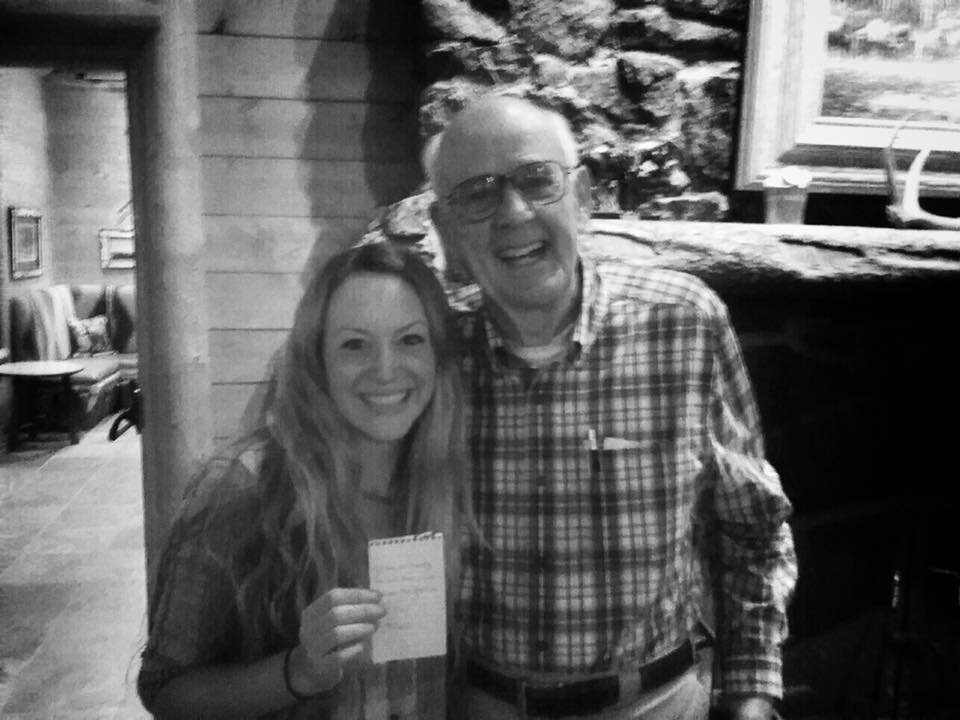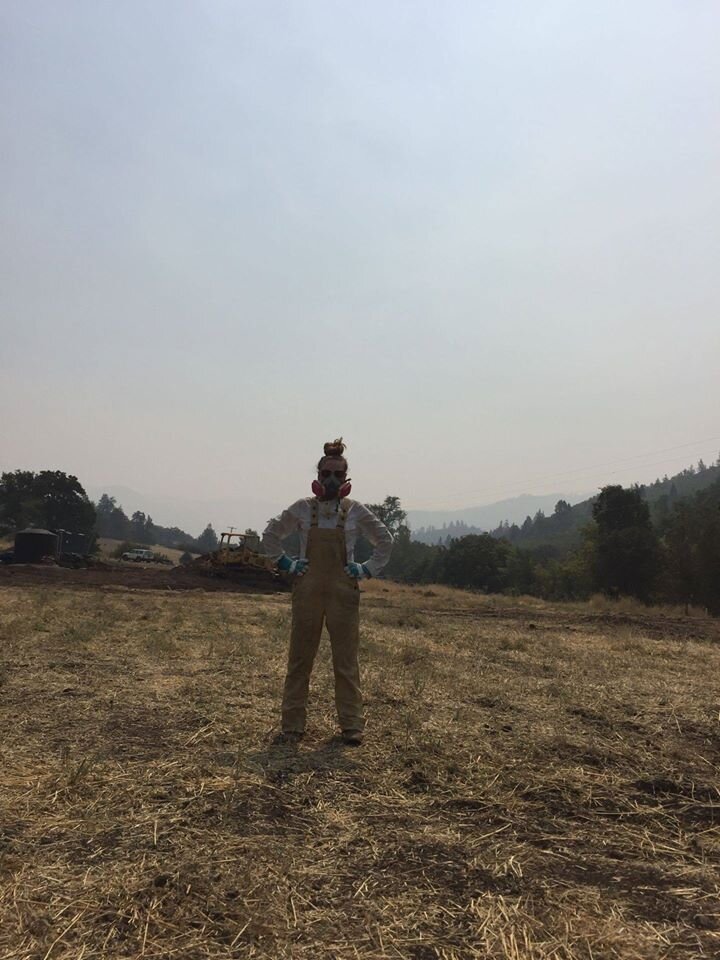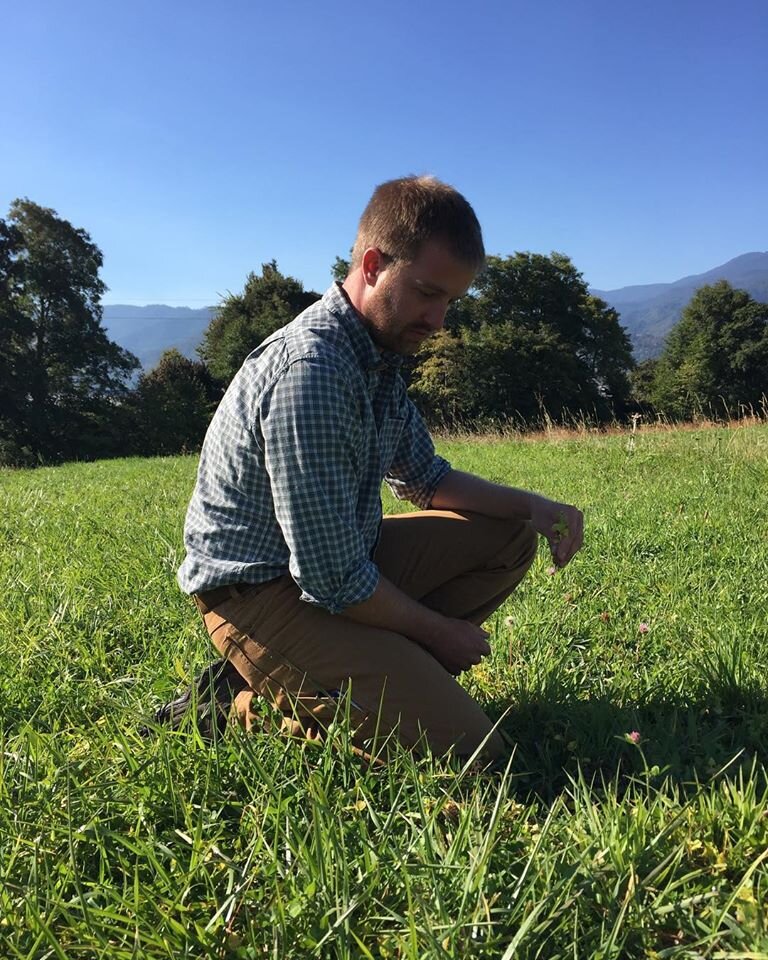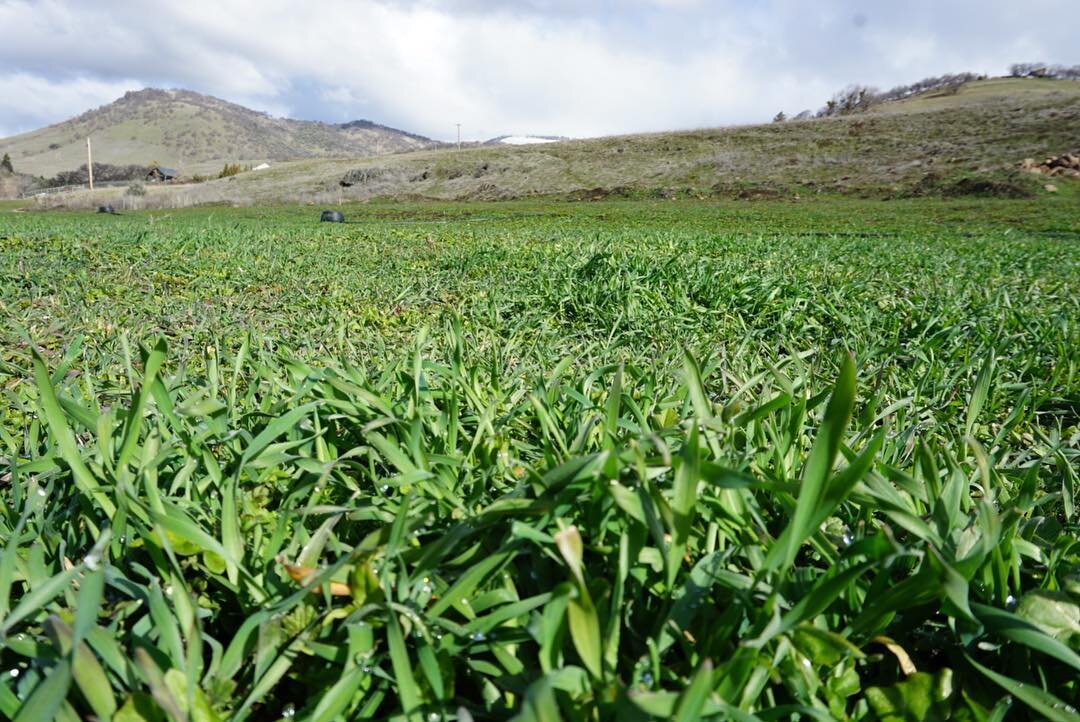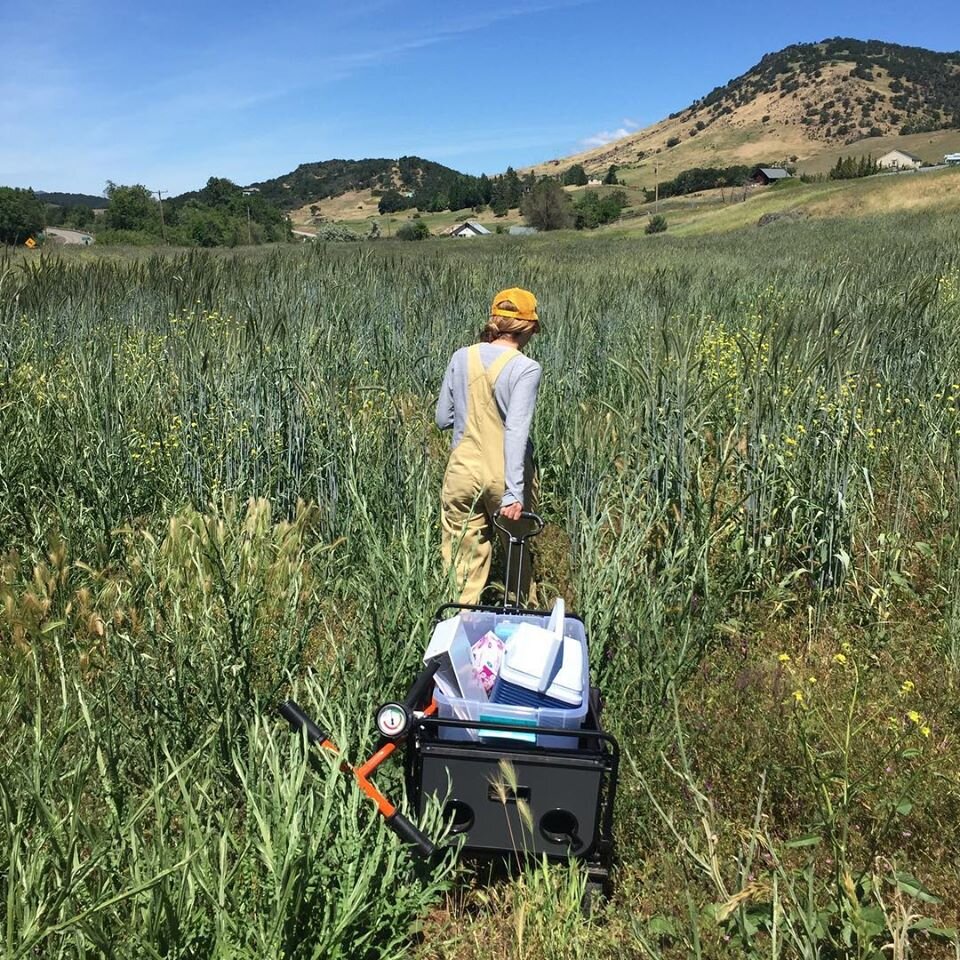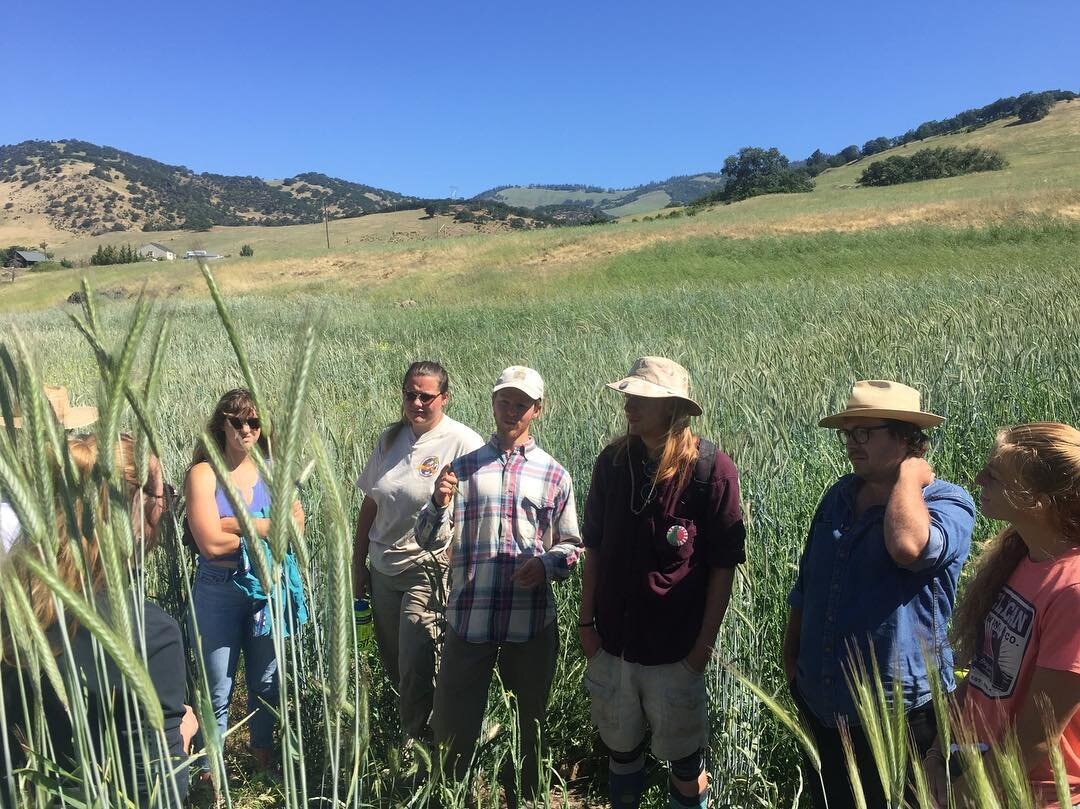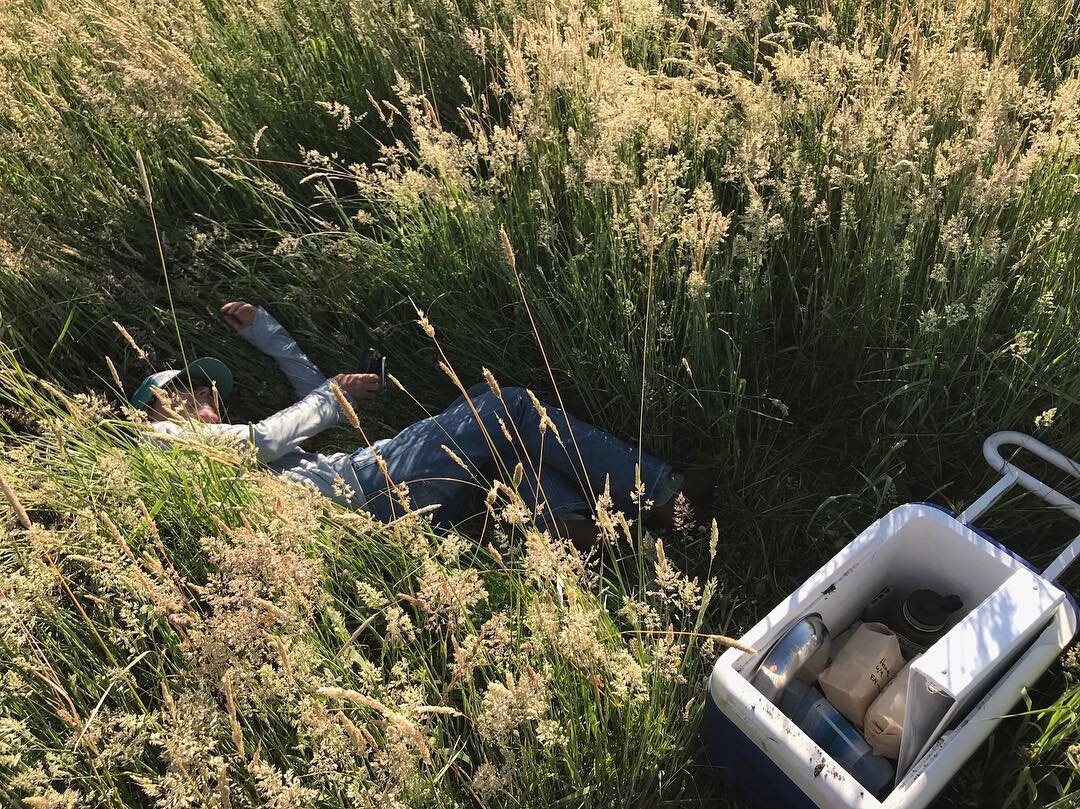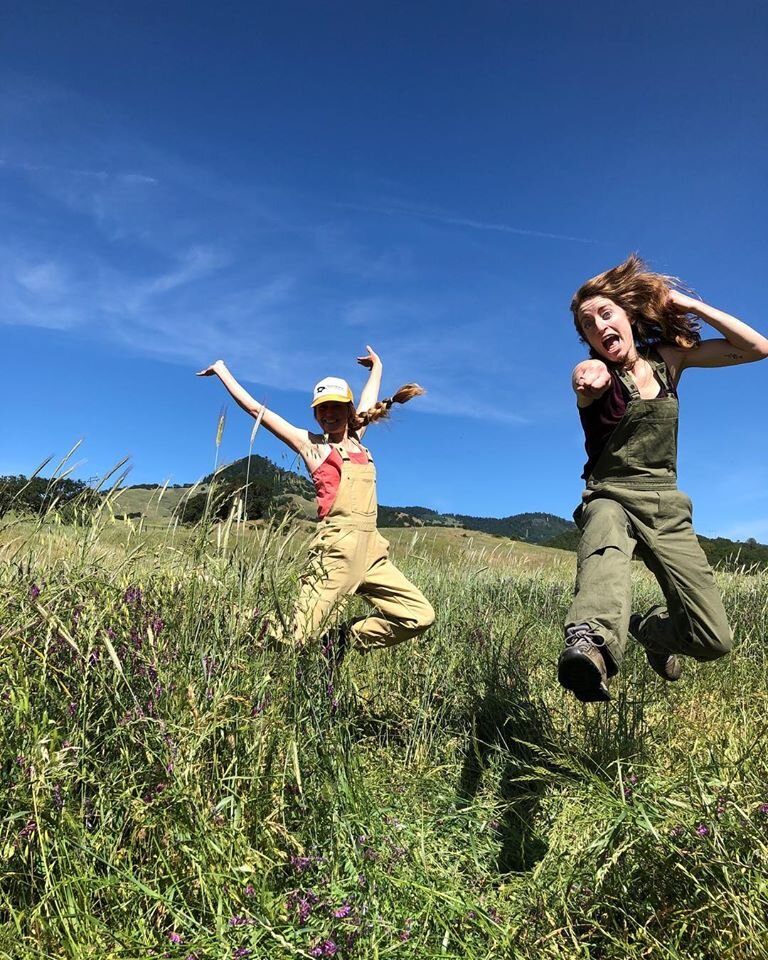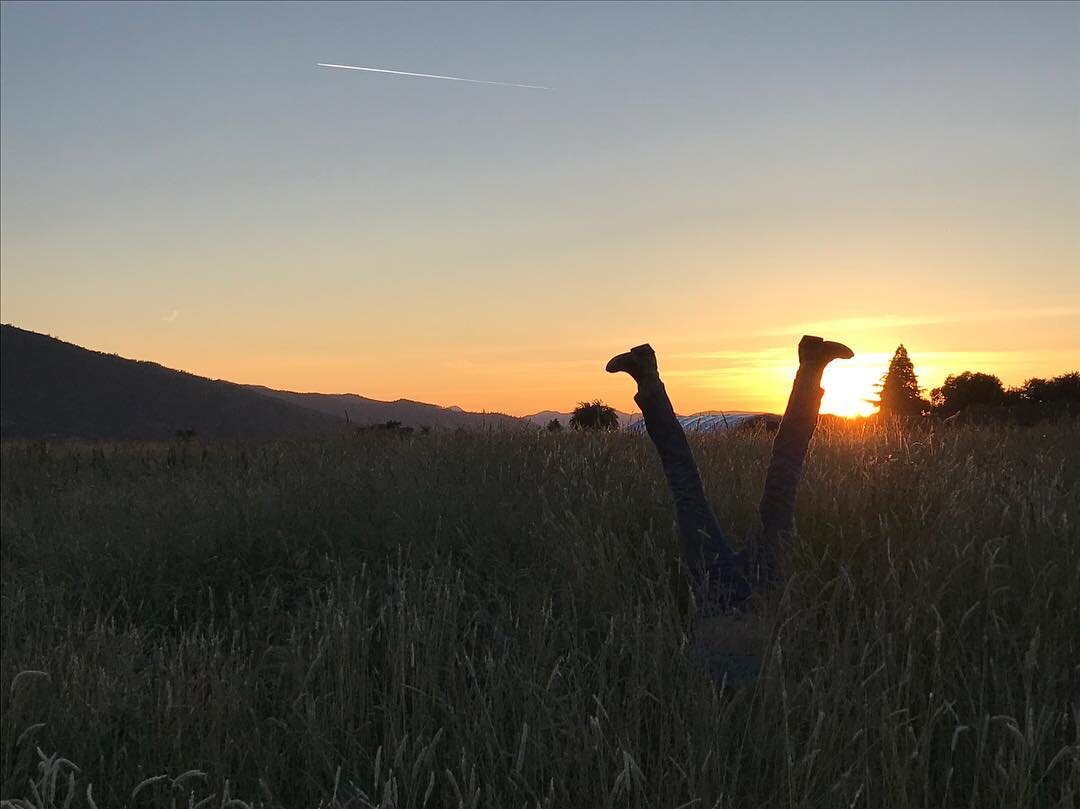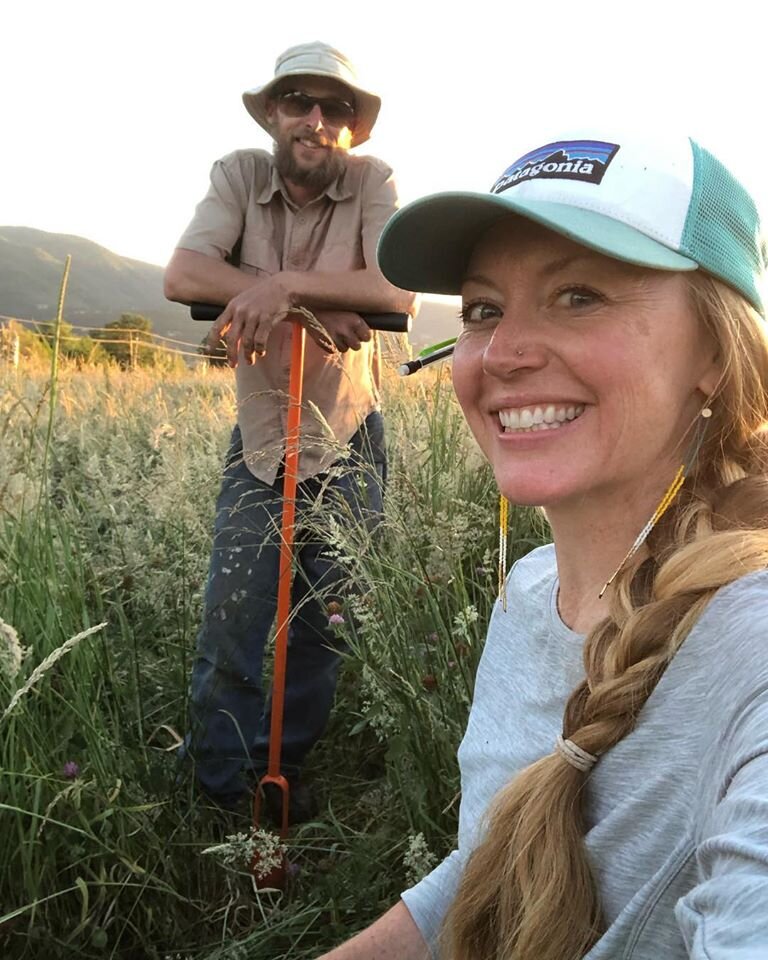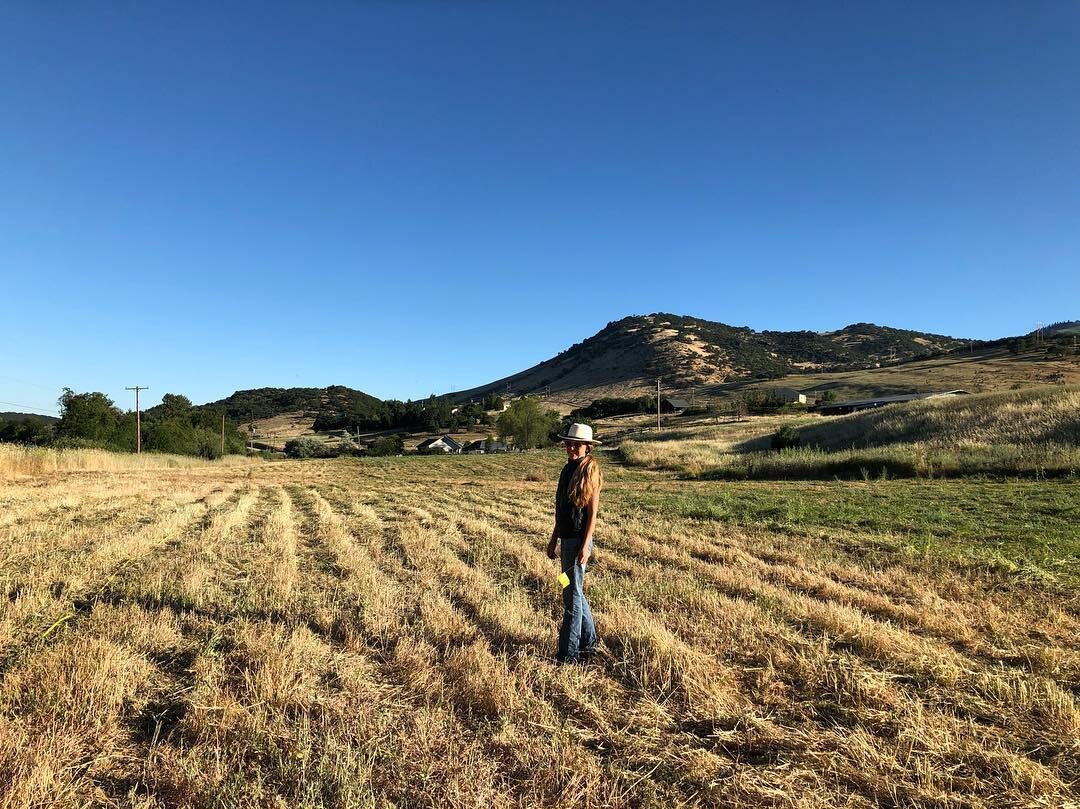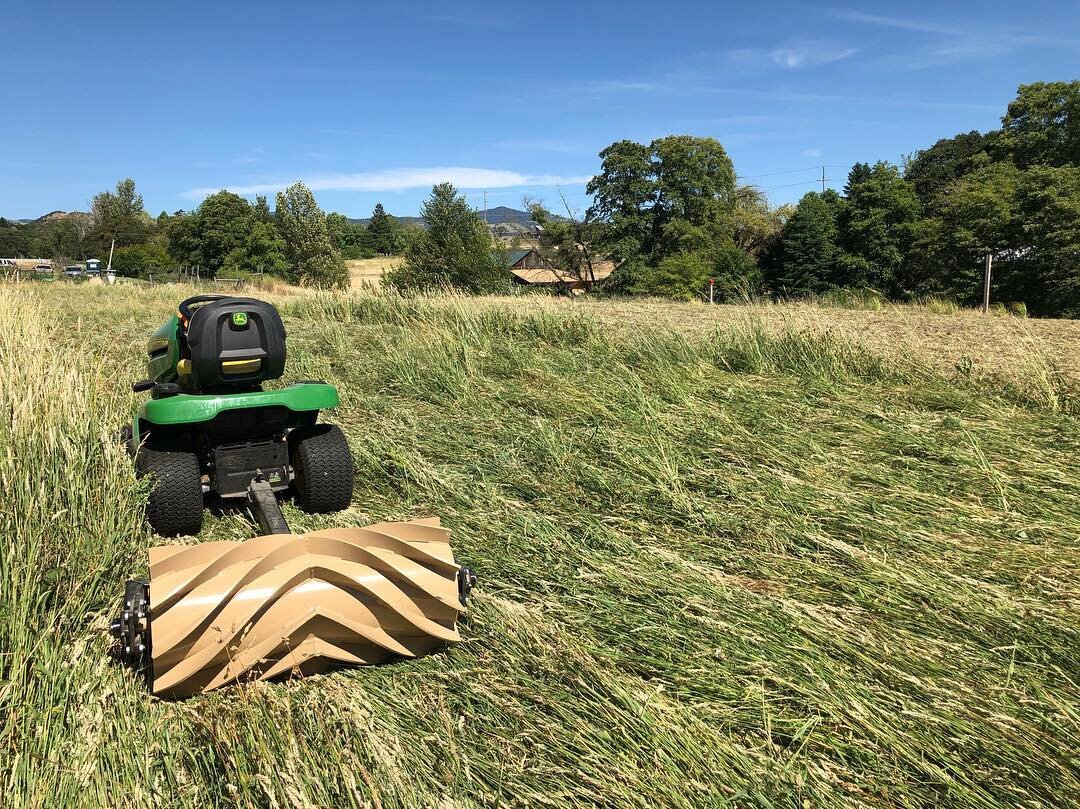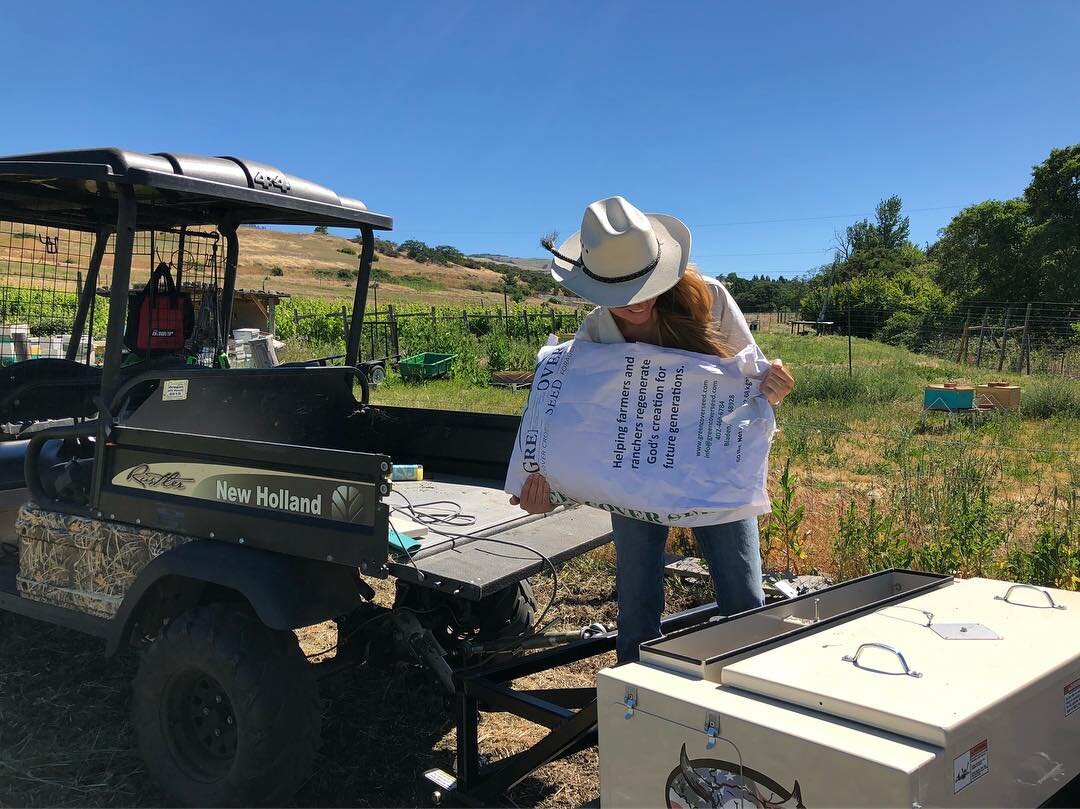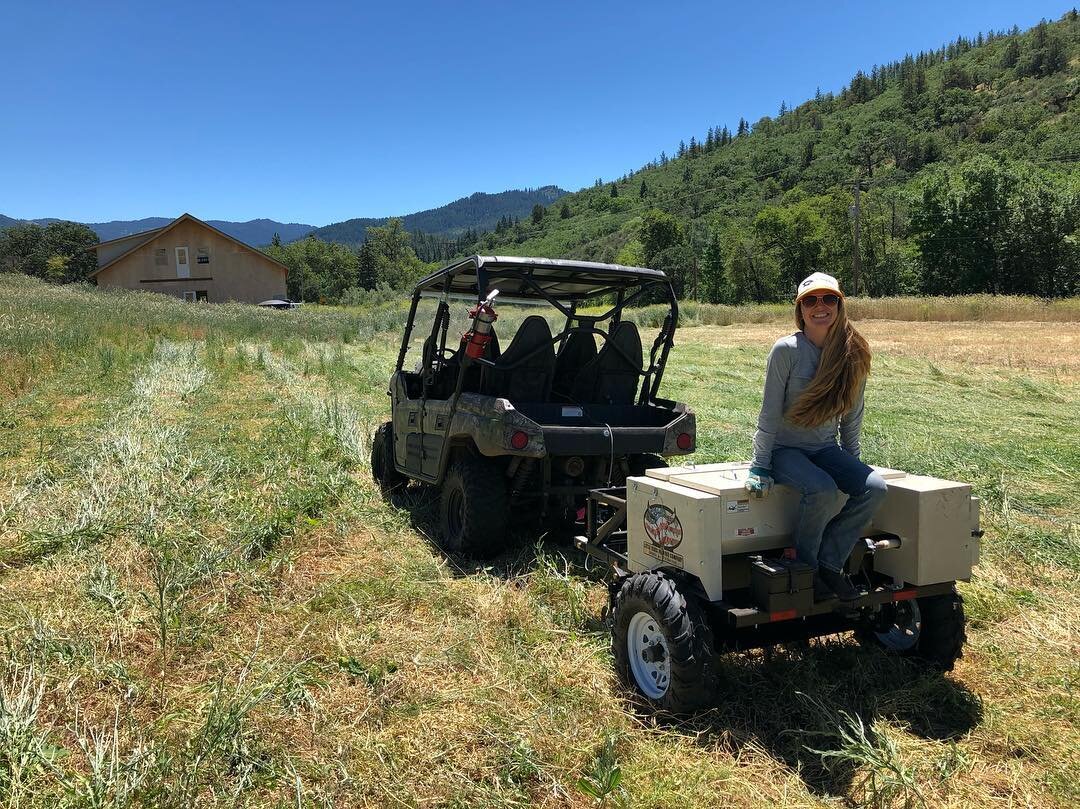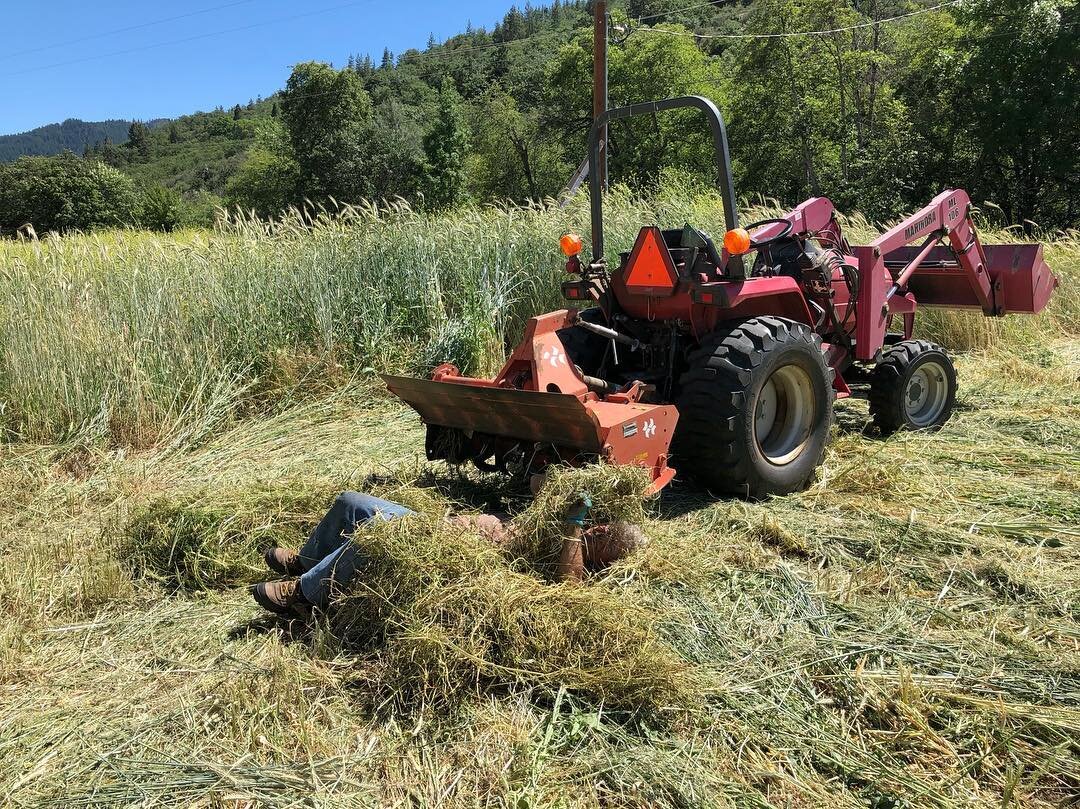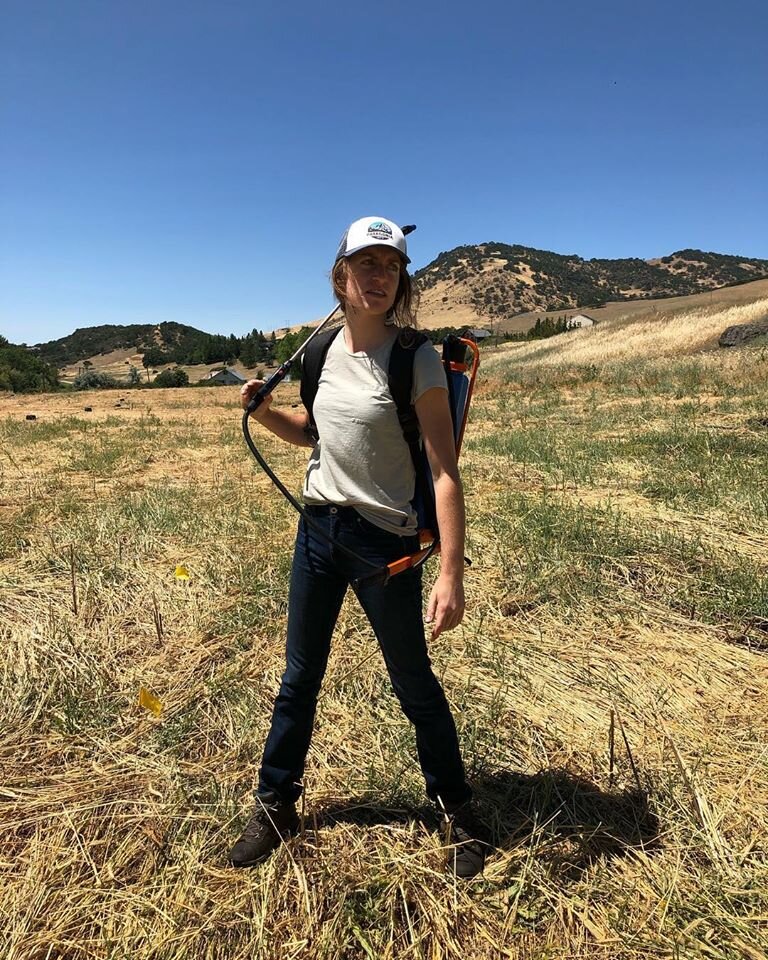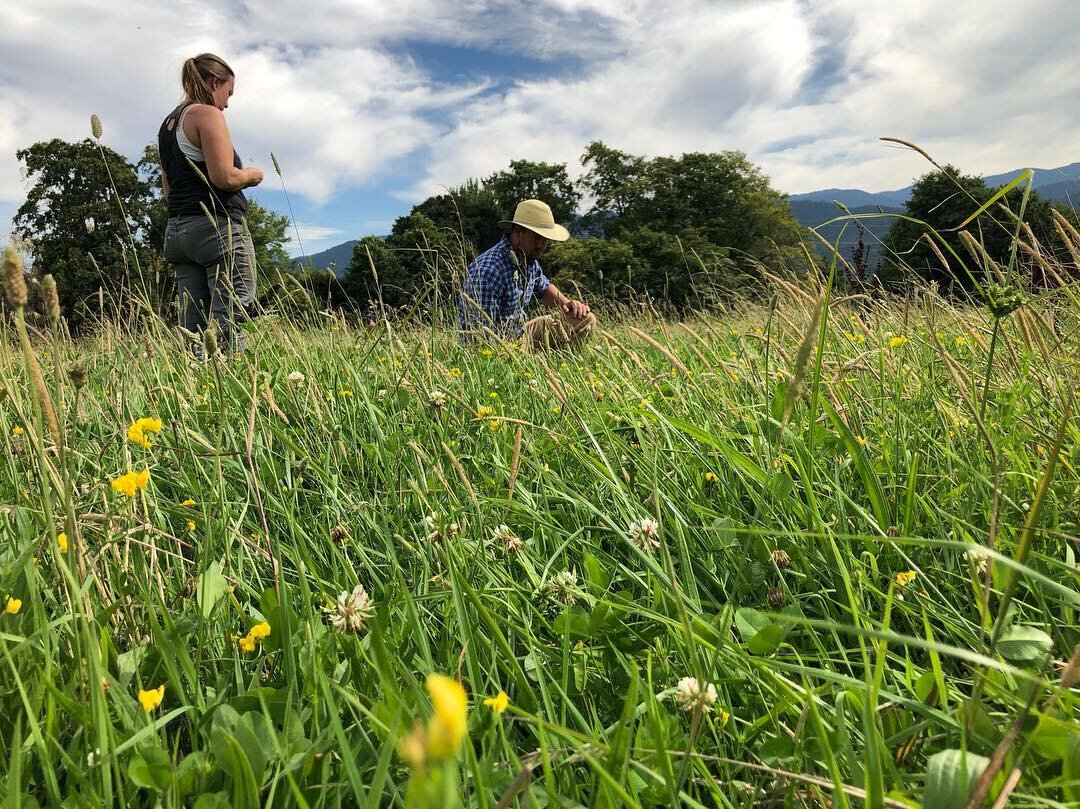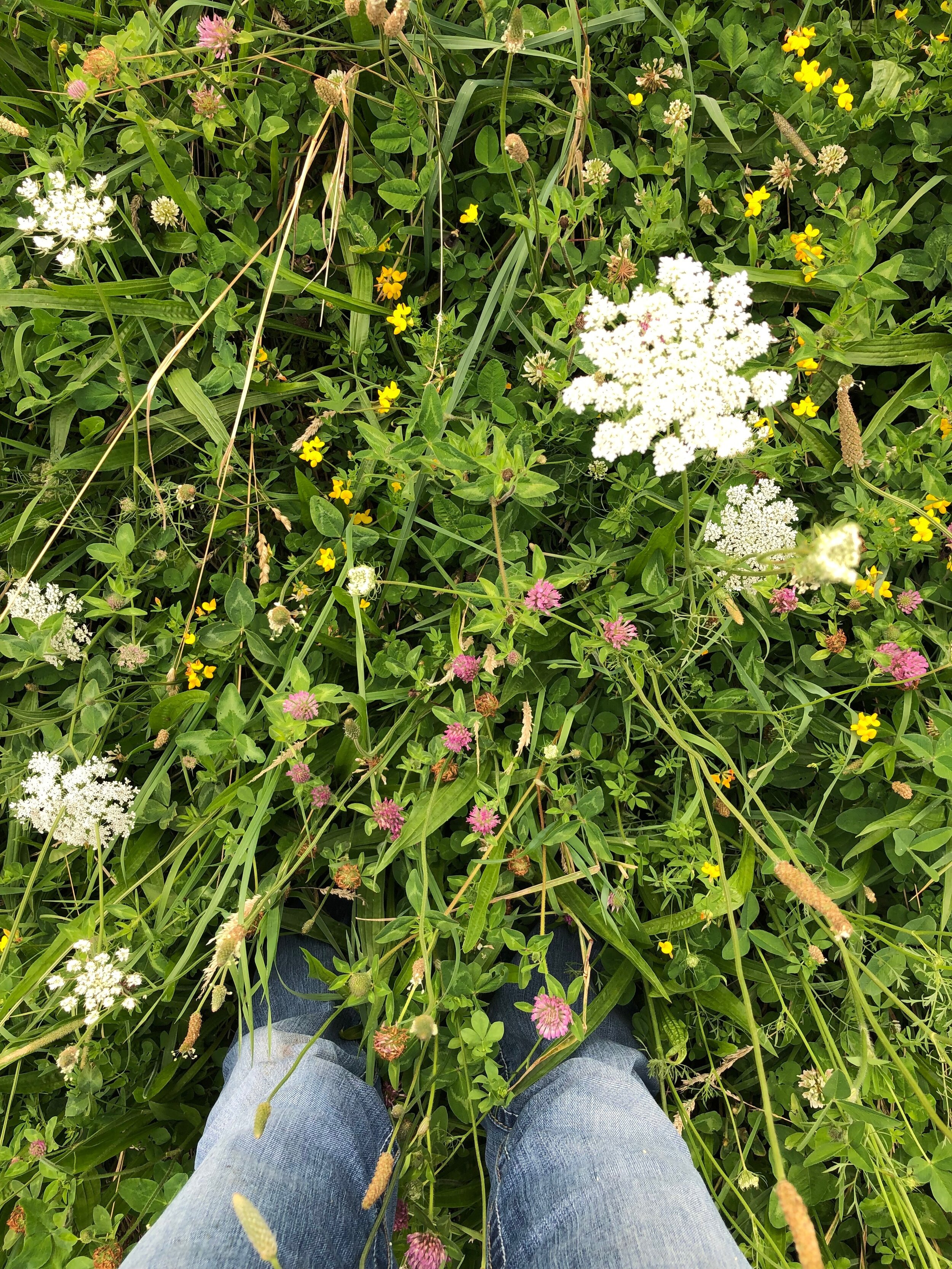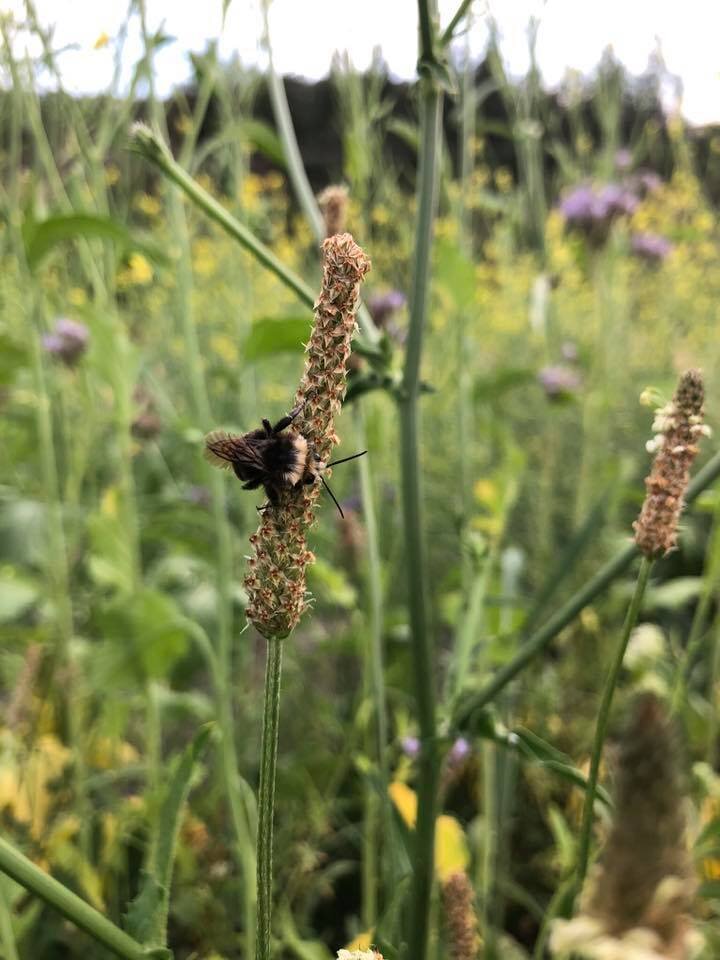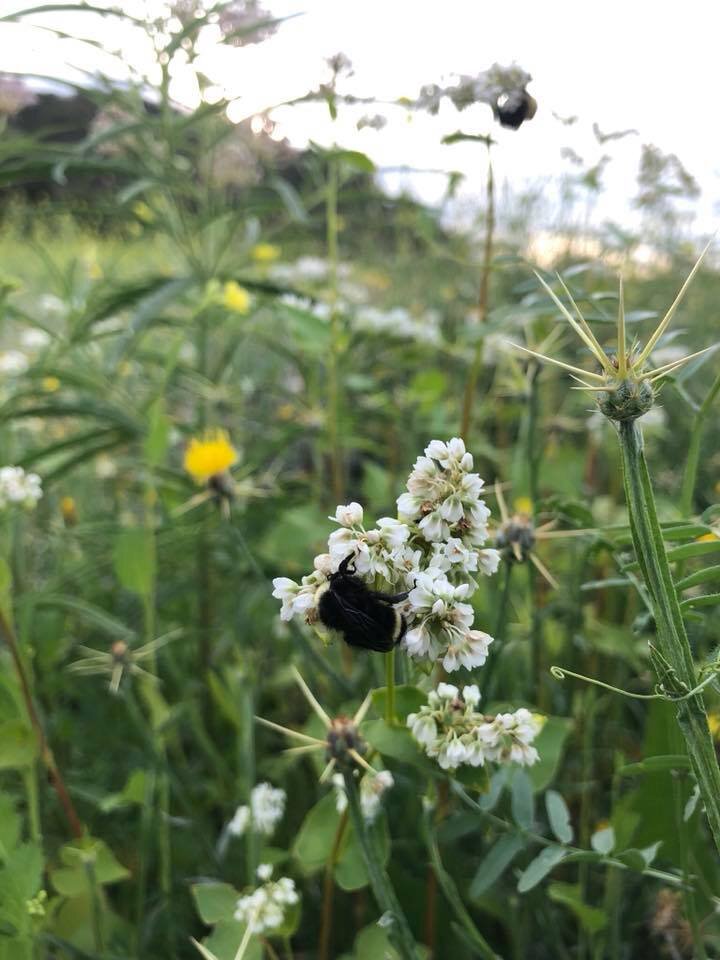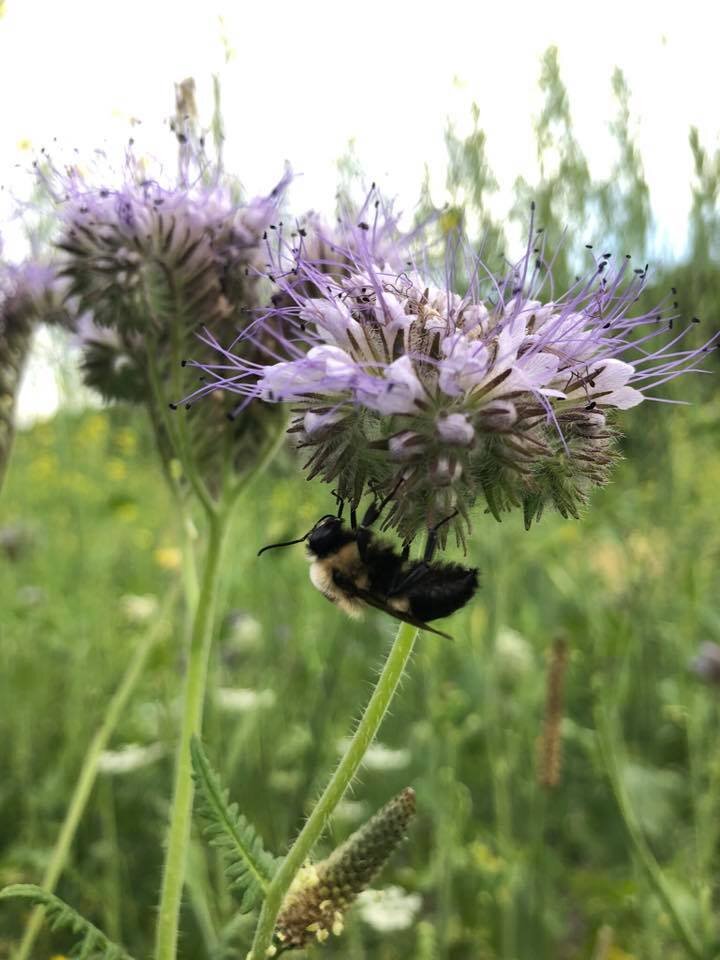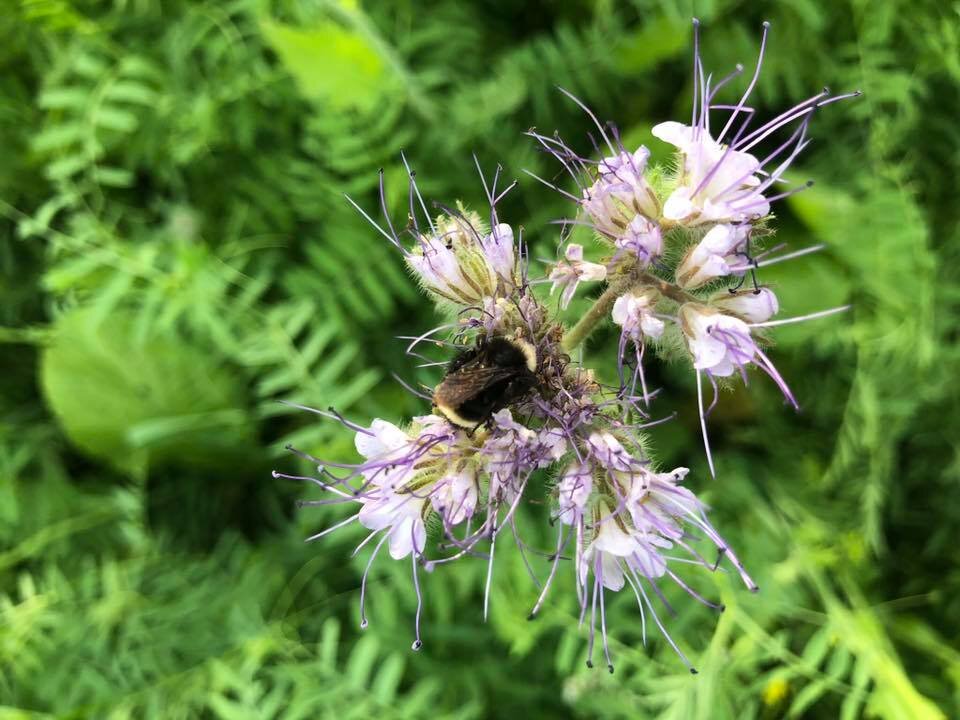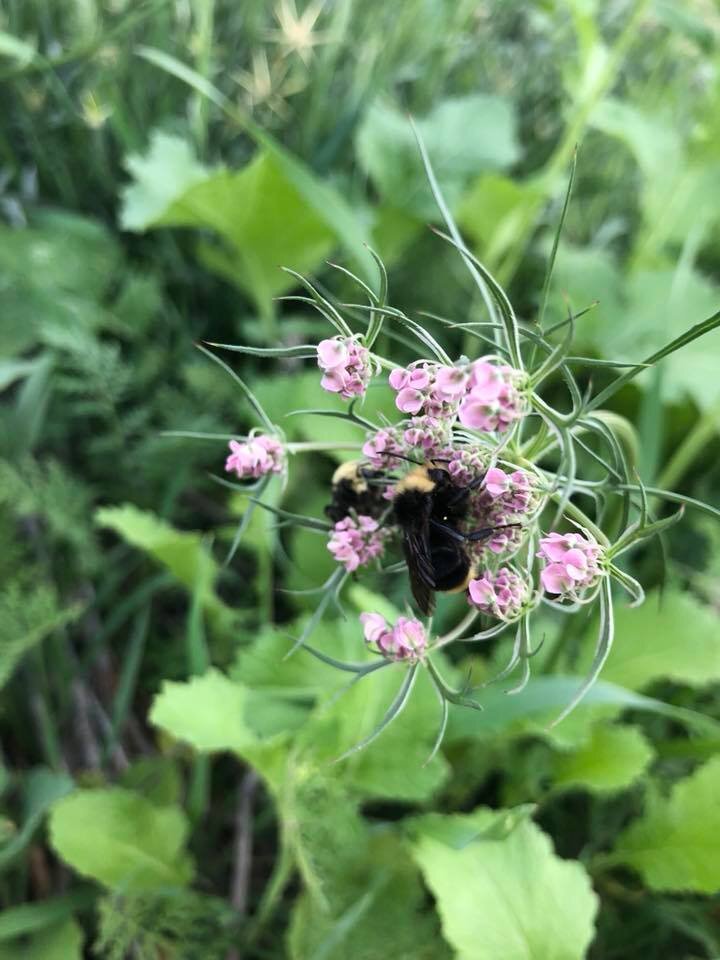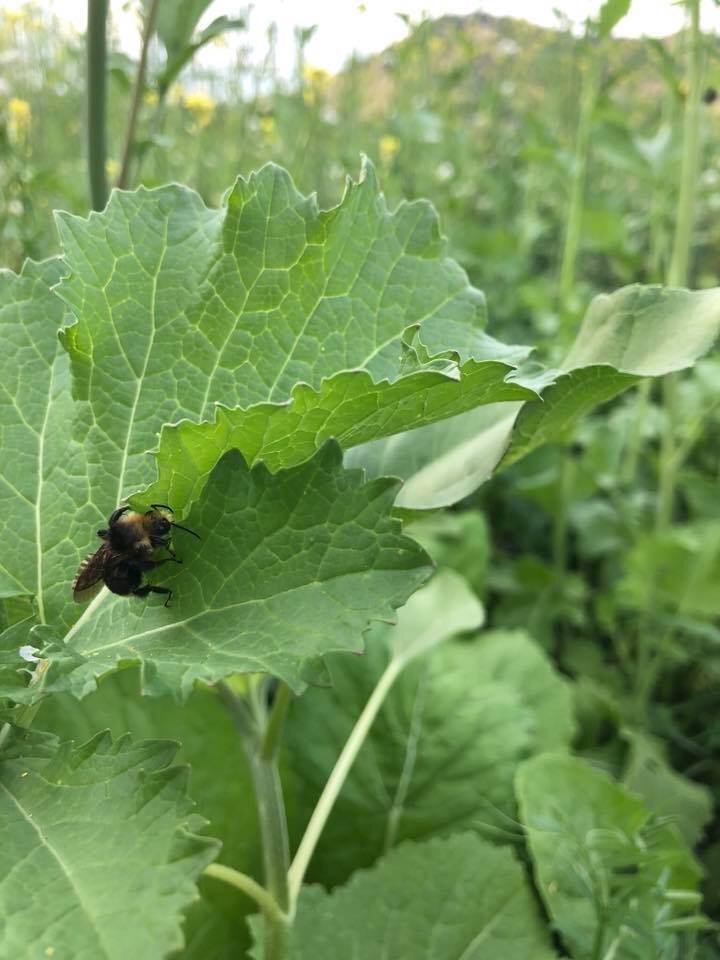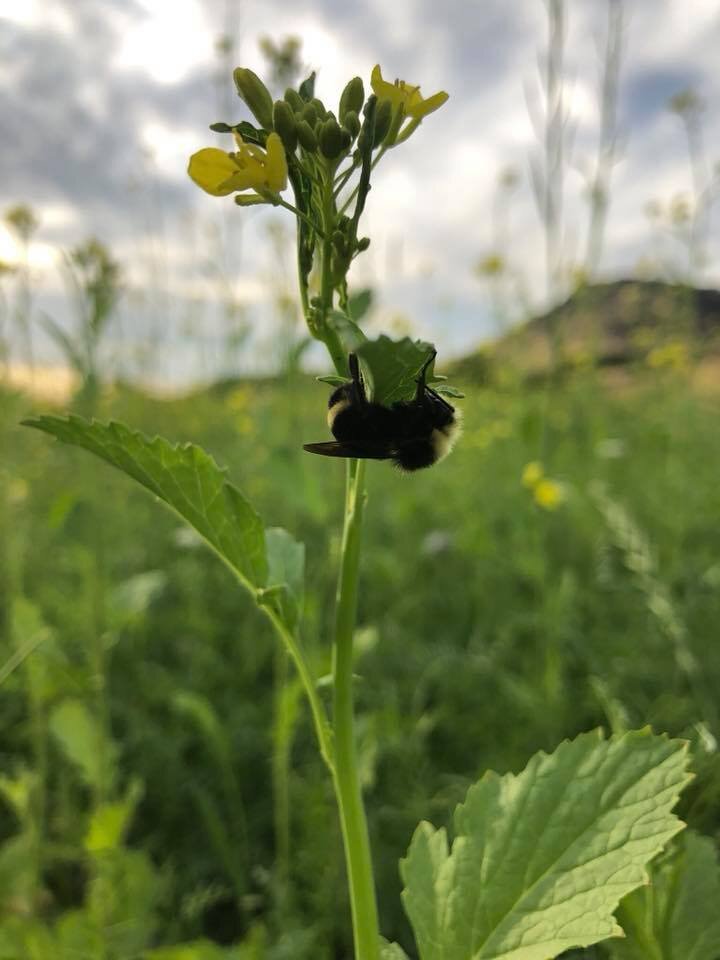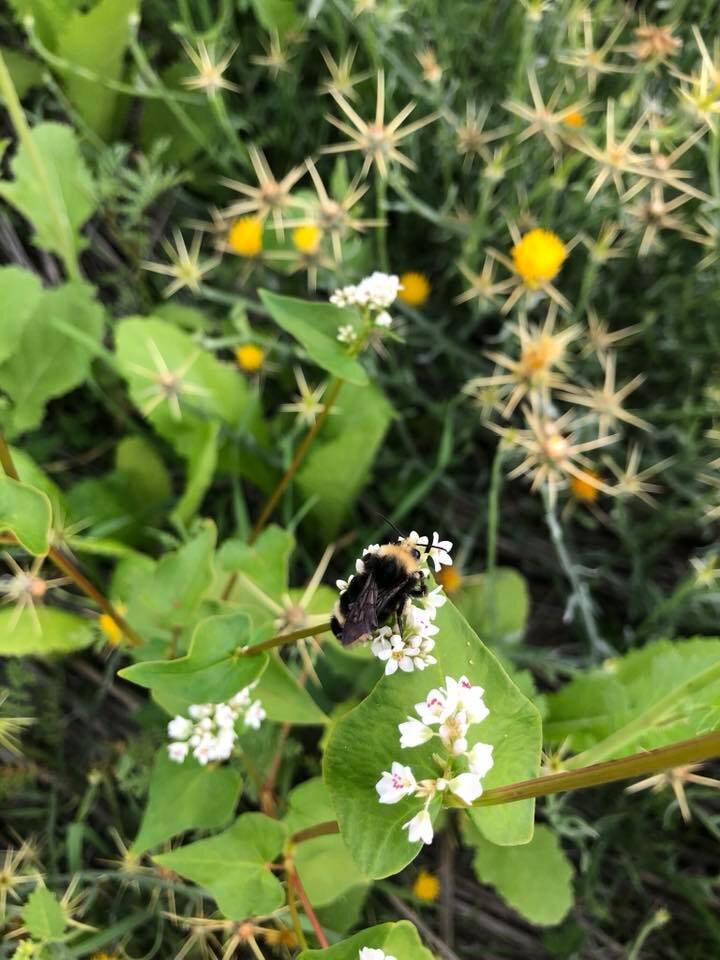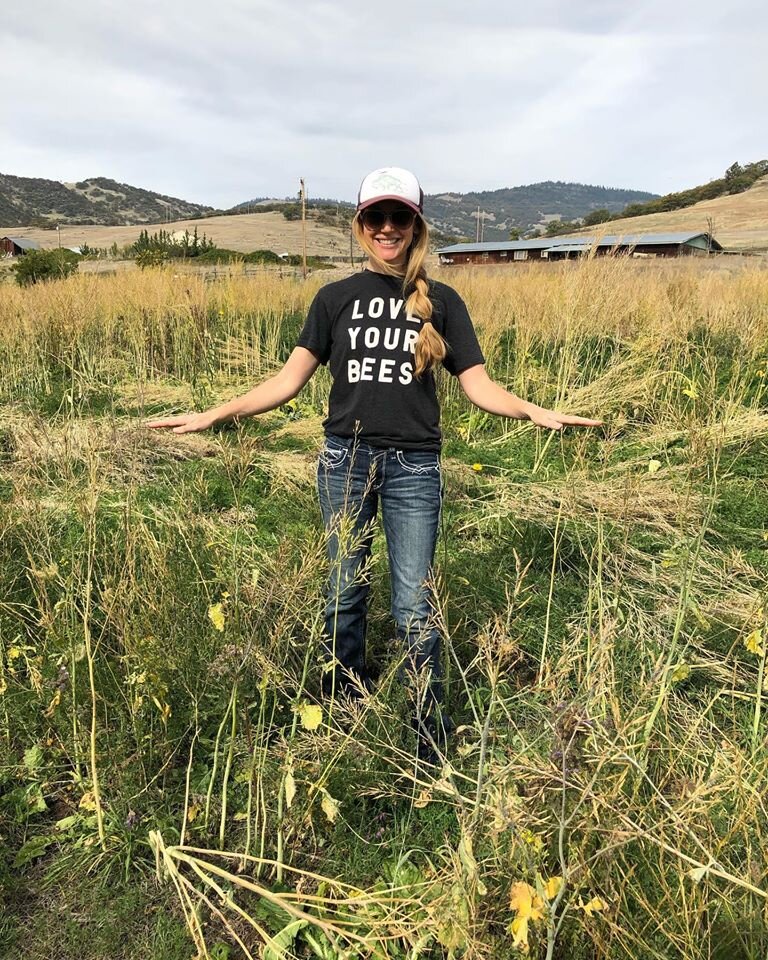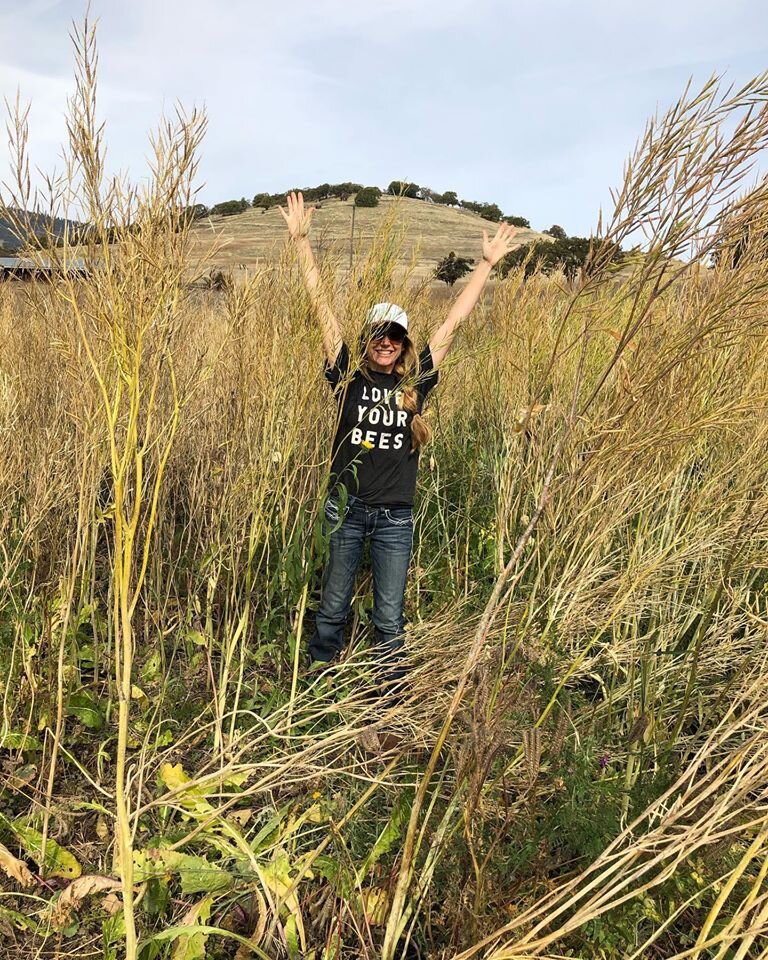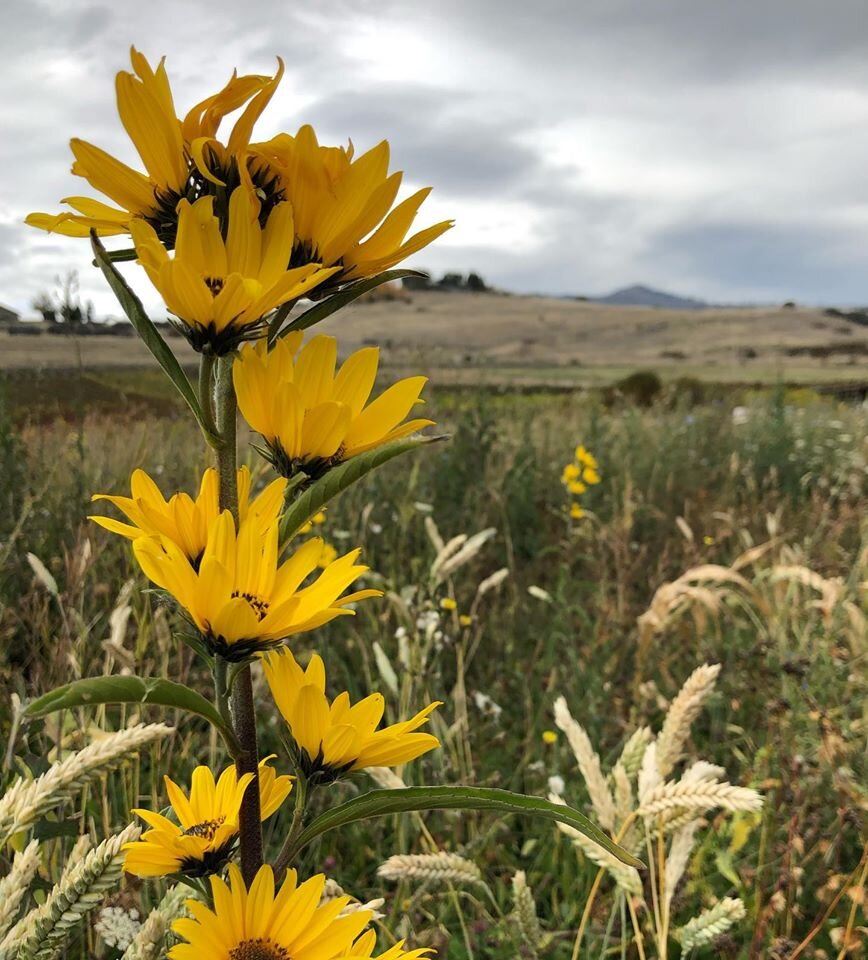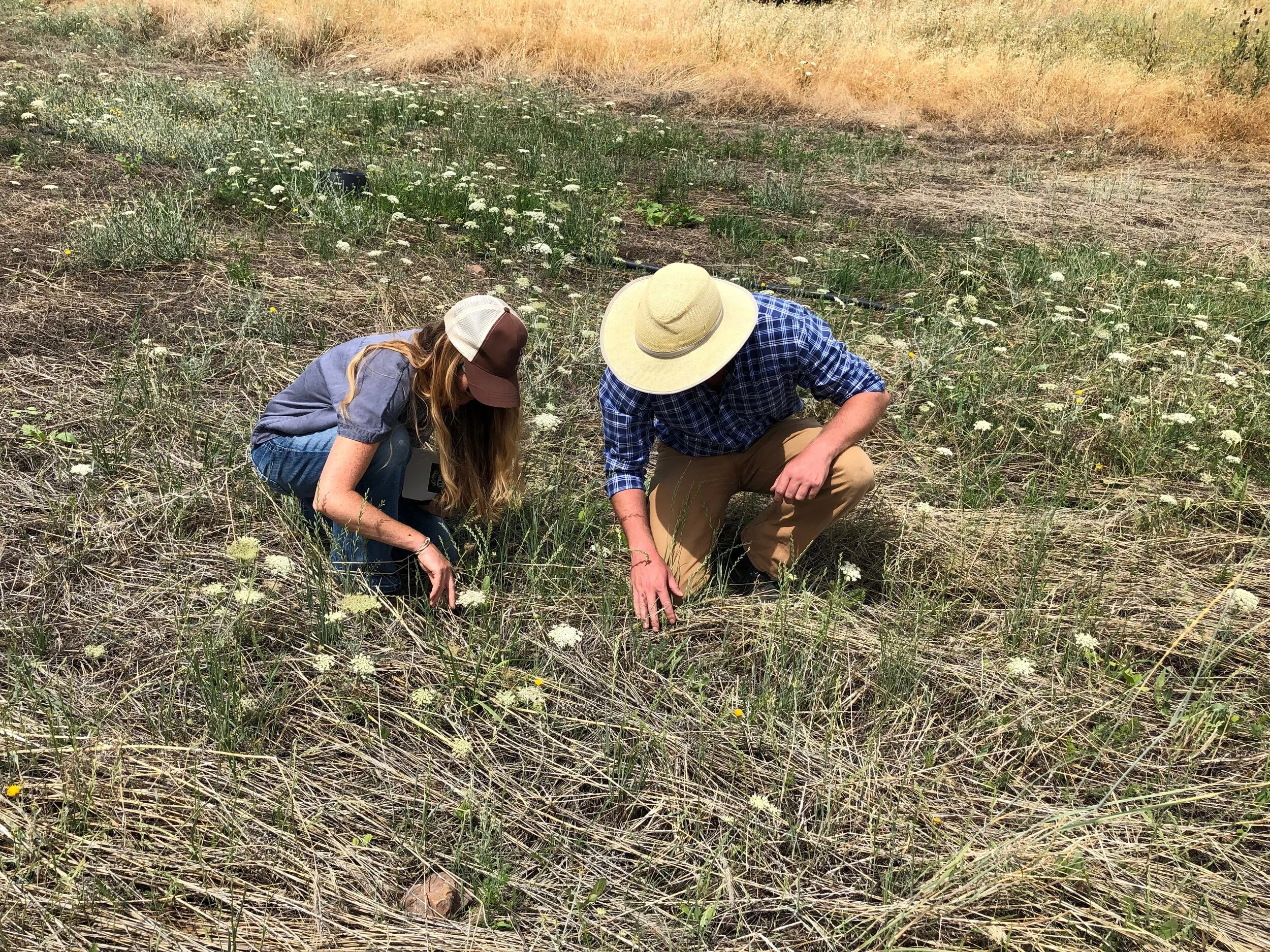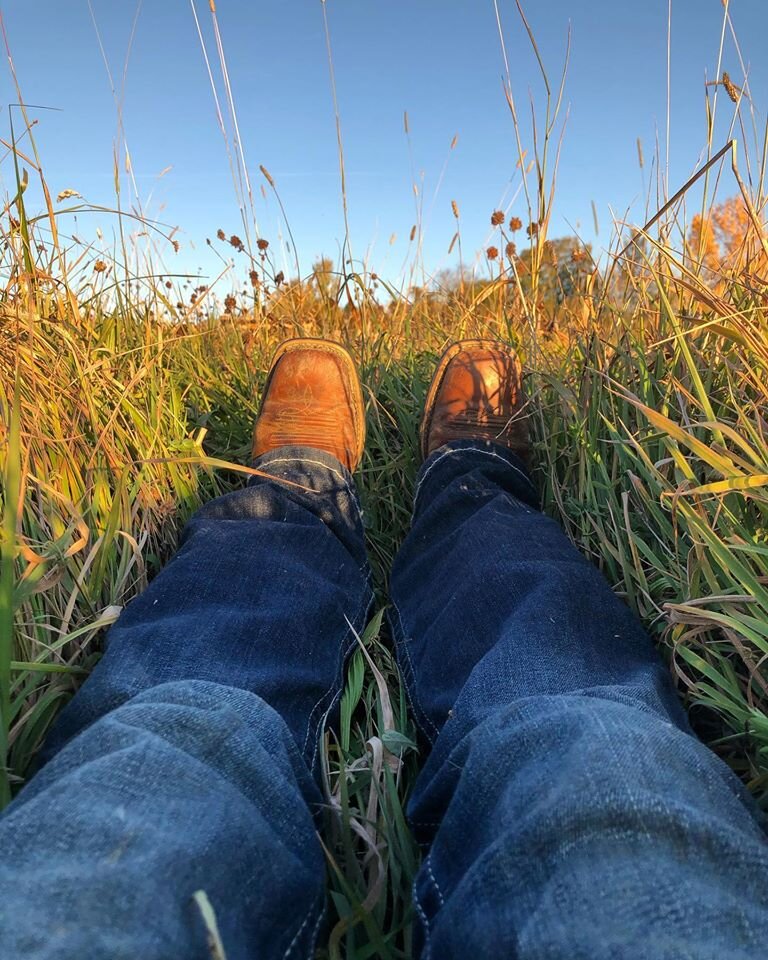Regenerative Bee Pasture
“The soil is the great connector of lives, the source and destination of all. It is the healer and restorer and resurrector, by which disease passes into health, age into youth, death into life. Without proper care for it we can have no community, because without proper care for it we can have no life.”
― Wendell Berry,The Unsettling of America: Culture and Agriculture
In February of 2018, I had the great pleasure of climbing one very steep set of cement steps, and settling into to the kitchen of Wendell and Tanya Berry. I had met them about a year prior at a retreat in the Rocky Mountains for like-minded folk working in food and medicine. Wendell and I took a fast liking to each other, and I appreciated his willingness to entertain my questions with robust and whimsical answers. We even wrote a poem together one night, over chocolate cake and whiskey. He pulled that iconic little paper pad out of his shirt pocket for me to write it down, and we both signed it. To this day, it might be one of my most prized possessions.
While sat in his kitchen we contemplated farming, the South, soil, honey, rural America, common friends, the beekeeping industry, his and Tanya’s lives and careers, the “me too” movement, and other general musings. I received sage advice on life and work, which I reflect on almost daily for direction and inspiration. I consider myself so lucky to have spent enough time with Wendell that I can easily hear his drawl in my head as I read his poetry and essays. Which I do as an (at least) weekly practice.
As I currently re-read “Gift of the Good Land” I’m reminded that he is a true seer. In the 60’s and 70’s he went toe-to-toe with big ag’s bad actors such as Earl Butz. And Wendell called it. He warned of the dangers of consumerism, industrial agriculture, and what the combination would do to rural main street. It would destroy the land and the people held up by it. If you haven’t read “Gift of the Good Land” or “The Unsettling of America,” I encourage you to pick them up, so I have one more comrade-in-arms shaking their head with me and muttering, “he was right.”
In his writing, Wendell often brings it all back to soil. As stated above, soil is everything.
This quote inspired me to think deeply about the connection between my love of bees, my love of the flowers that support them, my love for my community, and my love for good food.
In a recent article by Hope Reece for Vox Wendell states, “People have a moral responsibility to the sources of their food. People from the city should do an honest, full accounting of the food that they eat. The first thing they’ll discover is that they can’t do it. They don’t know the ecological cost or the cost to the people who did the work of production, what it costs the rural communities.”
I encourage you to take this as a challenge from Wendell, and really get curios about where your food comes from.
If most of your food comes from a large grocery chain, I encourage you to start here - the National Farmers Union’s “Farmers Share” page, updated often. Cheap food may be cheap to you, but someone, or something, is paying the difference for you. Be it our healthcare system, our farm workers, our rivers, or our bees.
What does food mean to you? How and where do you eat it?
This is my answer – I eat food when I’m out on a date, or snuggled in tight at home, with my love, when we’re with his kids, when I visit my grandma, on holidays with my family, when I finally have the chance to sit down with a friend I haven’t seen in forever, when I teach kids camps, when I fundraise for my organization, when I desperately need some alone time, and when I travel to talk to people about my love and passion for bees.
In his 1989 essay, “The Pleasures of Eating,” Wendell says that “eating is an agricultural act.” I guess you could say that eating for me is a spiritual act. I use food to express love, and to connect with myself and my community.
I take my spiritual practices very seriously, so I do my best to ensure that every bite I eat is congruent with these values of love, connection, and community. I shop at my local farmer’s markets, I visit local farm shops, I support my local food co-ops, and I only patronize restaurants that buy produce, dairy, eggs, meat, fish, and flowers from local farmers. I stick to this regimen when I travel (which is all over the place, all the time). I also try hard to buy and wear clothes that are made from ethically and sustainably grown fiber (Patagonia is doing a great job in this department, and I also applaud Prana’s efforts). I worked hard to have our Western Apicultural Society conference venue create a menu for us with local, sustainably farmed food. Over 90% of the food at my annual Hive to Table fundraiser is local. And last weekend I held my first Northwest Farmers Union annual meeting as president, where we provided locally farmed and cheffed food, and also went directly to a handful of local farms to meet the farmers.
It’s not easy, and it’s not convenient, but it’s worth it.
Why? In essence, because I love bees and I love my community and I want to support practices that support them. Also, because OH MY GOODNESS THIS FOOD IS AMAZING!!! When I eat whole, densely colored and flavored foods I think clearer, feel better, and look better.
I, however, think I can do even better. In my decade-long obsession with supporting local food systems I’ve gotten to learn a lot about soil. A. Lot. There is a movement called “regenerative agriculture” that is focused on building soil health as a foundational principal to farming. By regenerating soil through increasing plant diversity, incorporating animals, eliminating or reducing tillage, always leaving the soil covered (with plants), and leaving living roots in the soil, farmers and ranchers are increasing rainfall infiltration and reducing soil erosion, sequestering carbon into the soil, and building life beneath the soil surface which increases nutrient density in our food.
In essence - this practice, or movement, is what Wendell Berry has been telling us all to get back to for the last 40 years.
I’m currently composing a letter to Wendell asking the question, “How does it feel {that people are finally getting it on a mainstream scale}?” Is he cheering, or shaking his head? We’ll see.
As this movement jettisons ahead, I want to make sure that bees are completely considered. I’ve visited multiple farms and ranches where the owners boast “awesome pollinator habitat,” but when I arrive I can find no more than a couple of varieties of flowers blooming, and two or three species of bees. But that’s OK. A farmer’s job is not to key out species of bees, and obsess over the right flower mixtures. That’s what I have spent the last decade of my life doing, and I’m poised and ready to share.
After teaching many a lecture on “plant more {flowers}, spray less {pesticides}” without seeing much change on the landscape, I decided to start my own initiative called the “Regenerative Bee Pasture” project. Why pasture? Because pasture is the largest land use in this country, and at 654 million acres, there is some potential to have an extremely strong impact here.
Let me first take a minute to acknowledge that I didn’t invent the wheel here, there are many other organizations working on bee habitat conservation. But this movement needs every bee lover that it can get, so I am happily pulling out a chair and taking a seat at this table (even though I’ve been threatened not to, but that’s a blog for another time).
I feel, however, that the “Regenerative Bee Pasture” project is unique in that we are focused on western pastures, and have some stellar collaborators and goals that will benefit a multitude of stakeholders. We are discovering how to use the right systems, techniques, and tools to manage pasture regeneratively, so we can share ideas (and tools) with other pasture managers to get a high density and diversity of bee-friendly flowers onto landscapes through partnerships with the Jackson Soil and Water Conservation District, Rogue Farm Corps, White Buffalo Land Trust, and potentially Paicines Ranch, Fulstone Ranch, and more.
We are currently managing two pastures for technical and scientific research, and education and demonstration. Both sites have a control and a treatment section. The “control” is being managed with typical methods under the direction of the Oregon State University Extension Service’s Pasture and Production Forage Ecologist, Dr. Gordon Jones. The “treatment” side of the field is being managed using regenerative methods, focusing on soil health and bee-friendly flower diversity.
In partnership with Oregon State University’s Honey Bee Lab, Eastern Washington University’s Microbiology Lab, and Ward Labs, we are monitoring soil health, honey bee and bumble bee gut microbiomes, soil microbiomes, plant brix, and flower pollen nutrient density. We are looking for solid data that shows the link between soil health and bee health, to build an even stronger case for regenerative agriculture, and to share data-proven methods with farmers and ranchers to help them provide healthy landscapes for bees.
We were able to gather some baseline soil data this year, as well as plant our first trial seed mix, and I am more than happy to share some methods and materials with you.
Site Prep
Control: Mowed and tilled.
Treatment: Roller crimped. Here is a photo of the roller crimper Built by Daniel Unruh <daniel95970@gmail.com> 1-530-330-0292
Why roller crimping instead of mowing and tilling? I wanted to keep the soil in-tact as possible, and the roller crimper lay down the winter cereal rye to make a gorgeous mat of organic matter to be slowly decomposed by my soil biology. The rye on the control side was chopped up, tilled in, and gone quickly, leaving lots of bare soil vulnerable to wind and water erosion. The side-by-side photo below: on the left is the control, and on the right is the treatment. As I write this, there is still soil coverage (five months later) from the rolled thatch on the treatment side.
Planting
Control & Treatment: Regenerative Bee Pasture seed mix, “drilled” in with the Dewdrop seed drill rented from the Jackson Country Soil and Water Conservation District.
Seed Mix
Legumes
Birdsfoot trefoil
Cowpeas
Sunn hemp
Sainfoin
Red clover
Grasses
Forage sorghum
pring triticale
Orchard grass
Brassicas
Rapeseed
Hunter turnip
Kodiak brown mustard
Broadleaves
Buckwheat (Mancan)
Phacelia
Safflower
Sunflowers (Mammoth, Maximillian, Black Oil)
Okra
I ordered most of the seeds from Green Cover Seeds, using their seed calculator.
Irrigation
Control & Treatment: One site is watered with Rainbird overhead sprinklers once a day, the other is watered with K-line sprinklers once a day.
Soil Amendments
Control: None
Treatment: Black strap molasses and Dead Sea minerals (under the direction of rancher Justin Wilkinson).
Soil Testing
Control & Treatment: We took five samples (6” down) from the control and treatment pastures from each of the two sites (for a totally of 20 samples). We sent our samples to Ward Labs for PLFA analysis (fungus and bacteria) and the Haney Test (chemistry), and to EWU for microbiome analysis. Click to see a map and some basic soil data for our north pasture, and here for our south pasture.
Pulling off this project has been no small feat and I owe immense gratitude to my assistant Stephani Gimble, my former assistant Phylicia Chandler, our summer intern, Maggie Aceto, landowners Margie Me and Michael, and the Selberg Institute, volunteers Charlie Joslin and Andy Cullison, adviser Justin Wilkinson, and our collaborators and funders at the Jackson Soil and Water Conservation District, Patagonia, OSU, OSU Jackson Co. Extension, EWU, WSU, Avocado Green Mattress, the Clif Bar Family Foundation, and individual donors to the Bee Girl organization. And of course, for the continuous inspiration and insight gleaned from memories, notes, and pages, Wendell and Tanya Berry.
I am so excited for the next phase of this project when we really get to start digging the data on bee health, nutrient density in pollen, and abundance and diversity of bee species. So far our observational data shows that while the surrounding pasture (and vineyards, and hemp fields) are a food desert for bees, the RBP is a budding oasis of happily buzzing (and sleeping) bees.
As I travel around the US and Canada (and next year to Australia) talking to farmers and beekeepers about Regenerative Bee Pasture through my presentation, “Adventures in Dirt and Honey,” I am delighted and inspired by the excitement and curiosity around this project. Helen Keller said, “Optimism is the faith that leads to achievement. Nothing can be done without hope and confidence.” Thank you to my community, near and far, bee and human, for providing me with the optimism to carry on.
For more pictures of this project, click here. To follow along with this adventure, follow me on Instagram @sarahbeegirl and use the hashtag #regenerativebeepasture. If you would like to support our work, click here.
The full moon rises
my honey jar is empty
welcome the fireflies.
Wendell Berry & Sarah Red-Laird
Mowing and light tilling vs. roller crimping


